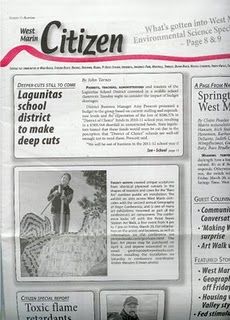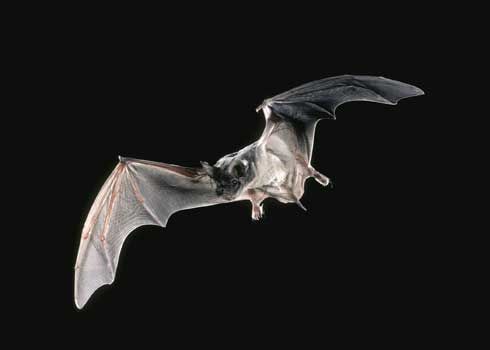
A new analysis finds there are fewer foggy days along the Northern California coast than there were 100 years ago. That’s bad news for the venerable coast redwoods.

In addition to charting a reduction in the number of foggy days over the past century, U.C. Berkeley researcher Todd E. Dawson says their study also found fewer hours of foggy conditions on the days when the mist was present.
In their analysis, Dawson and his colleague, James Johnstone, found there was a relationship between drought years and fog conditions, but it’s not what one might expect.
Read the abstract of their published paper on this research here.
 Medical marijuana has grown from an “only in California” curiosity into an expanding realm of business opportunities—which some are now calling the Cannabis Industry. Among them is an entrepreneur who sees a niche in training workers for that budding industry.
Medical marijuana has grown from an “only in California” curiosity into an expanding realm of business opportunities—which some are now calling the Cannabis Industry. Among them is an entrepreneur who sees a niche in training workers for that budding industry.

The Cannabis Training University program will be offered at the Holiday Inn Express in Santa Rosa July 24-25 (other summer sessions are scheduled in San Jose and Santa Cruz). Jeffery Zorn outlines the curriculum.
There are further details about the program in this promotional video.
[video:http://www.youtube.com/watch?v=cxkaq_Tnacc 300x200]
Zorn is himself a graduate of Oaksterdam University, the Oakland-based school that was established to address many of the same needs and concerns as the Cannabis Training University. But as the founder, owner, CEO and promoter for CTU, Zorn sees comparative benefits in his program.

Cannabis activist and advocate Ed Rosenthal is among the instructors at the Cannabis Training University, but will not be among the faculty for the Santa Rosa workshop.
Normal 0 false false false MicrosoftInternetExplorer4 st1\:*{behavior:url(#ieooui) } /* Style Definitions */ table.MsoNormalTable {mso-style-name:"Table Normal"; mso-tstyle-rowband-size:0; mso-tstyle-colband-size:0; mso-style-noshow:yes; mso-style-parent:""; mso-padding-alt:0in 5.4pt 0in 5.4pt; mso-para-margin:0in; mso-para-margin-bottom:.0001pt; mso-pagination:widow-orphan; font-size:10.0pt; font-family:"Times New Roman"; mso-ansi-language:#0400; mso-fareast-language:#0400; mso-bidi-language:#0400;} There is a concerted effort underway to bring the next generation of electric cars to Sonoma County. But it requires more than just the fleet purchases that have already been ordered.
 When a local ownership group came forward to purchase the Point Reyes Light from its contentious and unpopular out-of-town owner, they expected an era of peace in publishing would follow. But that wasn’t what happened.
When a local ownership group came forward to purchase the Point Reyes Light from its contentious and unpopular out-of-town owner, they expected an era of peace in publishing would follow. But that wasn’t what happened.

There are numerous details about the failed newspaper negotiations that are told differently by the two sides: who approached whom about a possible deal? Was it to be a sale or a merger? And, perhaps most vehemently, which side was first to breach the non-disclosure agreement that was part of those talks. The owners of the Point Reyes Light charge it was Joel Hack, when he published his June 17th EXTRA edition of the West Marin Citizen. Hack contends it was the other guys’ attorney.

Western Marin County is one of those rare regions still served by two local newspapers. And their current feud isn’t really something new, observes Mark Dowie (right) , the vice chairman of the recently formed Marin Media Institute, which now owns the Pt. Reyes Light.

 More than 50 years ago, Patricia Winters got her first bat, and promptly fell in love with it. As an advocate for the small nocturnal flying mammals, she was known throughout the North Bay and beyond as the Bat Lady. She died of cancer at age 70 recently, but shared her enthusiasm and knowledge in an early North Bay Report from January 2006. This is a repeat of that report.
More than 50 years ago, Patricia Winters got her first bat, and promptly fell in love with it. As an advocate for the small nocturnal flying mammals, she was known throughout the North Bay and beyond as the Bat Lady. She died of cancer at age 70 recently, but shared her enthusiasm and knowledge in an early North Bay Report from January 2006. This is a repeat of that report.
How does someone become “the Bat Lady”? In her case, recalls Patricia Winters, it started almost half a century ago.
Bats are moderately common in North America, but far more prevalent in the tropics, where they play an essential role in propagating fruits and other crops.
 This is a Mexican free-tailed bat in flight, one of the more common species in northern California. Because of their echolocation sounds, bats actually make a lot of noise as they fly at night, but those sounds are at pitches to high for human hearing.You can listen to the echo-location sounds of a Mexican free-tailed bat, transposed into the rage of human hearing, in this audio clip.
This is a Mexican free-tailed bat in flight, one of the more common species in northern California. Because of their echolocation sounds, bats actually make a lot of noise as they fly at night, but those sounds are at pitches to high for human hearing.You can listen to the echo-location sounds of a Mexican free-tailed bat, transposed into the rage of human hearing, in this audio clip.
 For contrast's sake, here is the sound of what Patricia Winters calls a microwave popcorn echo. This bat send out its sounds between a gap in ins front teeth, so that the echo will no reverberate inside its mouth.
For contrast's sake, here is the sound of what Patricia Winters calls a microwave popcorn echo. This bat send out its sounds between a gap in ins front teeth, so that the echo will no reverberate inside its mouth.
The Statewide Integrated Pest Management program at UC Davis offers this online resource to guide homeowners in dealing with bats generally and on their property.

 Pallid bat with fresh-caught grasshopper.
Pallid bat with fresh-caught grasshopper.
There are places where thousands of bats live together in caves or underground, and emerge in great clouds as the day turns dark. Here's a video of such an emergence.

 Live Radio
Live Radio